
Vibrant Environment
All | Biodiversity | Climate Change and Sustainability | Environmental Justice | Governance and Rule of Law | Land Use and Natural Resources | Oceans and Coasts | Pollution Control

As we get ready to ring in the New Year, the editors of Vibrant Environment thought it might be nice to take a look back at some of the work ELI did in 2018.
While environmental quality over the past 50 years has no doubt improved, the pace of change is leaving in the dust the linear environmental strategies of the past. We’re living in a fascinating moment in time when divergent forces—private environmental governance, law, technologies, and communities—are coming together, allowing us to harness their combined power in a new environmental paradigm. In A New Environmentalism: The Need for a Total Strategy for Environmental Protection, ELI offers a new way to think about the environmental strategies of tomorrow. The article was published in the September issue of ELR’s News & Analysis and was featured at the 2018 ELI-Miriam Hamilton Keare Policy Forum. We look forward to continuing the conversation in 2019.

“Our nation's food security depends on strong agricultural policy that provides stability for America's farmers and ranchers; protects our land and natural resources; develops new trade opportunities while leveling the playing field for our producers; strengthens rural communities; and helps Americans of all stripes access the nutritious foods they need to keep their families healthy. This is America's food policy. This is the Farm Bill.” (The House of Representatives Committee on Agriculture)
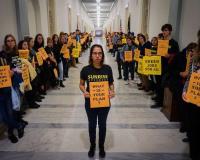
Close to 150 activists were arrested during peaceful protests organized by the youth-led organization Sunrise Movement on Monday, December 10. During and after the direct action, in which thousands of activists visited democratic offices demanding support for incoming Rep. Alexandria Ocasio-Cortez’s (D-N.Y.) proposal for a Select Committee on a Green New Deal, 10 additional democratic representatives pledged their support for the proposal. The resolution would create a committee that would have the specific mandate to draft a Green New Deal—the goals of which include 100% renewable energy, upgrading infrastructure, and green technology deployment — that would be ready by 2020. For “green” democrats, this is a difficult proposal to deny, especially given the depth of research on scaling green strategies, as exemplified by ELI Press’ latest release, Legal Pathways to Deep Decarbonization in the United States: Summary and Key Recommendations.

Continuing from ELI’s December 10 post on the legal authorization and applications of TEK in the United States, today, we explore incorporation of TEK into Canadian law.
Around the world, decisions impacting indigenous peoples’ traditional territories historically have been made without the participation, input, and consent of the indigenous communities themselves. Natural resource management relied solely on Western science, excluding rich knowledge gained over centuries of direct experience and practice.

Well before the world’s atmospheric level of carbon dioxide reached 400 ppm, residents and scientists in the Arctic were documenting dramatic changes taking place in the Arctic environment, which is warming at twice the rate as lower latitudes. The Arctic has seen loss and deterioration of summer and fall sea ice, melting of permafrost, migration of shrubby plants into the region, fires, and changes in the phenology of birds, animals, insects, and plants such that their seasonal cycles have become out of sync.

Lead exposure from drinking water is a deeply rooted regulatory, economic, and environmental justice problem in the United States. Tragic stories from Washington, D.C. in the early 2000s, Flint, Michigan in 2014, and most recently in Newark, New Jersey, expose on the national stage the most extreme cases of drinking water contamination. But it is also an everyday reality that falls disproportionately on many low-income and minority communities across the United States.
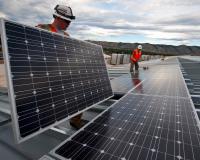
Solar panels, wildlife observatories, and rain barrels, oh my! How can the Environmental Law Institute’s Blight Revitalization Initiative for Green, Healthy Towns (BRIGHT) Area-Wide Planning Guide help your community implement green infrastructure? The BRIGHT guide compiles research on brownfields revitalization to empower communities and municipalities with some helpful tools to turn a brownfield into an economic opportunity. BRIGHT recognizes the economic and community-building potential that green infrastructure development can have for a community.
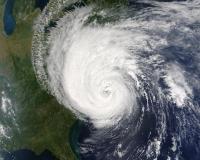
In 2017, almost eight percent of the American population was affected by natural disasters. Hurricanes Harvey, Irma, and Maria swept through Florida, Georgia, Texas, Puerto Rico, and the U.S. Virgin Islands, leading to billions of dollars of federal disaster assistance. The 2018 hurricane season was another year of devastating destruction, most recently seen in the aftermath of Hurricanes Florence and Michael in the Southeast, severely affecting the citizens of Alabama, Florida, Georgia, North Carolina, South Carolina, and Virginia. With climate change likely to amplify the impacts of hurricanes, hurricane season will continue to strain communities, infrastructure, and federal disaster programs into the future.
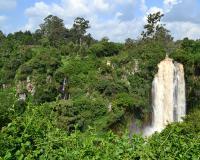
Extreme weather events are becoming regular headlines across the world. In 2018 we have seen many countries report record-breaking high temperatures, catastrophic storms that have caused millions of dollars’ worth of damage, and/or widespread flooding that has displaced hundreds of thousands of people. Three years ago, Parties to the United Nations Convention of Climate Change gathered in Paris to negotiate action to combat climate change and adapt to its effects. This culminated in the adoption of the Paris Agreement, which has been widely praised for its collaborative approach to tackling climate change whereby the commitments of individual countries will add up to a significant global response.
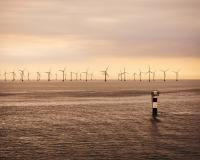
“It’s all happening,” declared a June 2018 article about offshore wind development in the United States. Indeed, the National Renewable Energy Laboratory has identified a trend toward a viable U.S. offshore wind industry that is gaining momentum. Despite this trend, it has been 17 years since the first offshore wind project was proposed, and the 30-megawatt (MW) Block Island Wind Farm is still the only operating project. Has the time finally arrived for this industry?